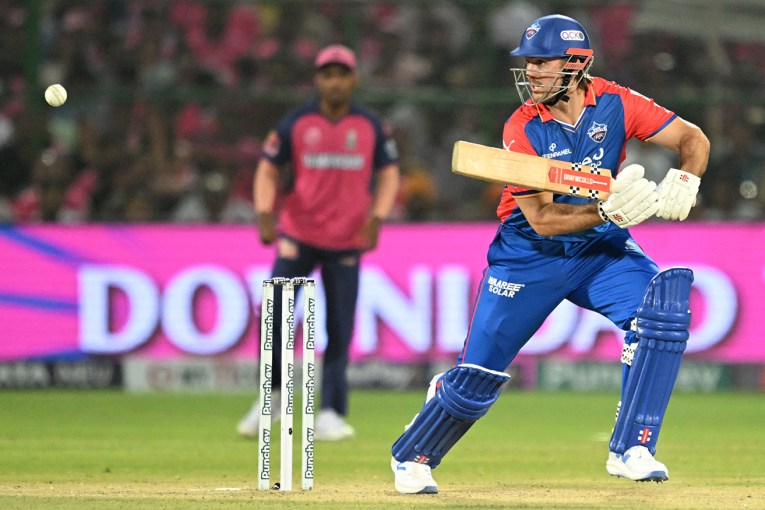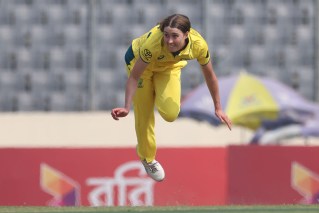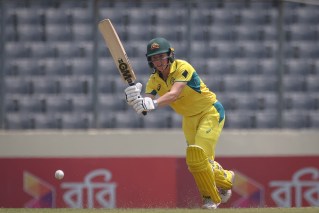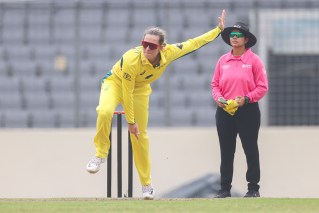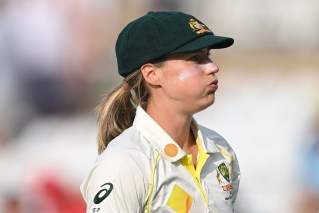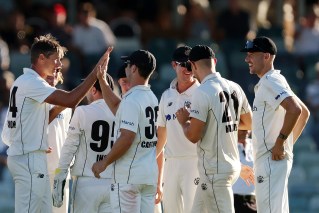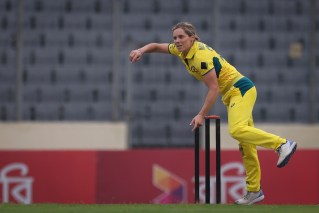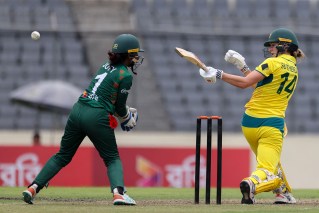All aboard the Indian express as Perth Test shapes up as a fast bowling shootout

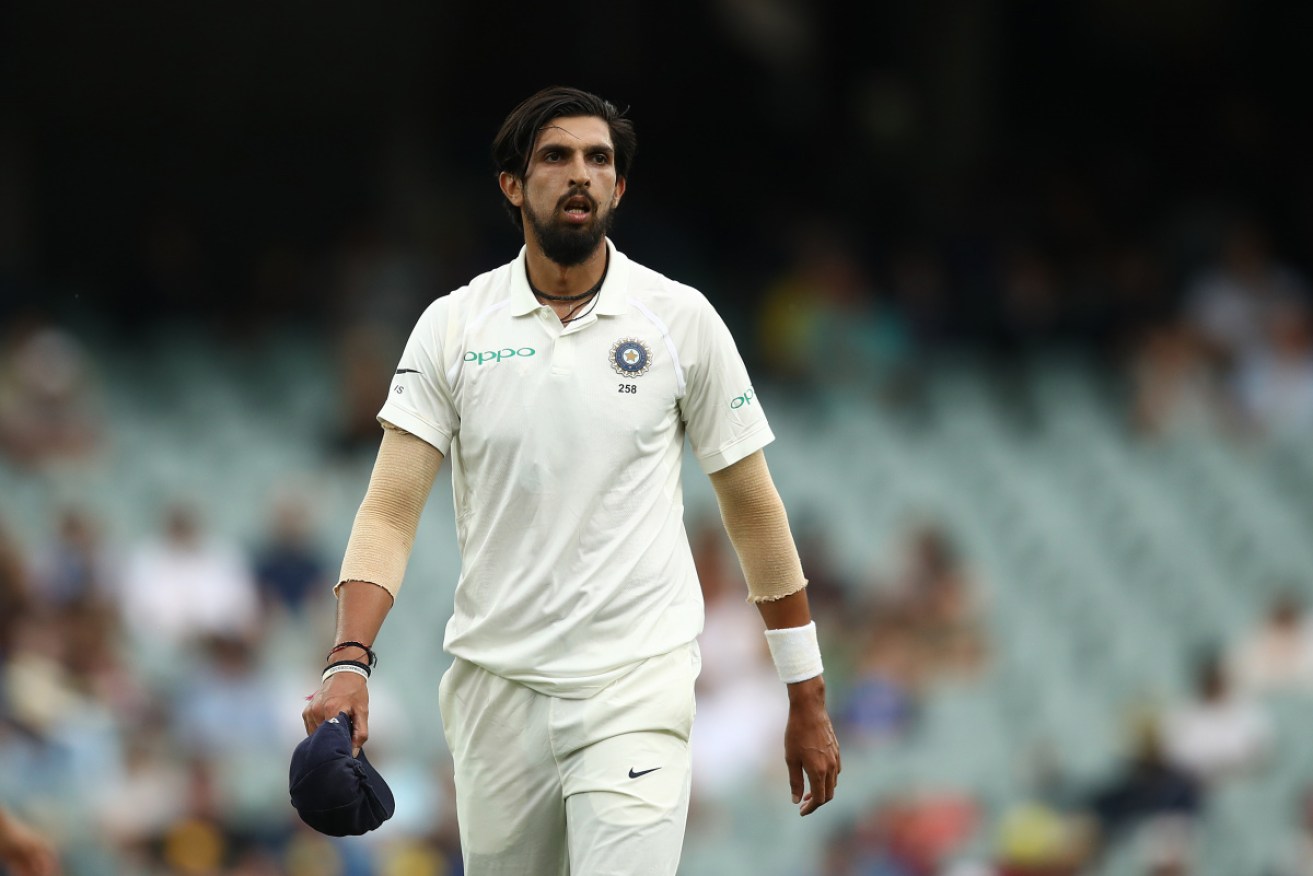
Ishant Sharma has emerged as one of the stars of a threatening Indian pace attack.
In 2008, India’s fast bowlers won a Test match in Perth.
They defeated an Australian side featuring names like Ricky Ponting, Michael Clarke, Michael Hussey, Andrew Symonds and Adam Gilchrist. They set a huge target, then held off the chase. A decade later, the result still induces mild shock.
India, to put it mildly, has never been famous for its pace attacks. There have been a few great quicks, such as Kapil Dev, Javagal Srinath and Zaheer Khan.
But not a clan of them. Never a cartel.
And on a fast pitch like the one they’re about to encounter at Perth’s new stadium, which is designed to have WACA-like bounce, India is never supposed to compete.
Sachin Tendulkar’s teenage century in a doomed cause in 1992 became so famous precisely because he showed resistance that was thought impossible.
The 2008 boilover hardly involved a storied attack: the left-armer RP Singh who managed 14 Tests, the swinging all-rounder Irfan Pathan who was broadly painted as an underachiever, and a raw lanky 20-year-old named Ishant Sharma, who bruised up Ponting with pace and steepling bounce.
Quality bowling from Ishant Sharma.
Aussies with plenty of work to do! https://t.co/lTUqyqRMzW #AUSvIND pic.twitter.com/KL6NBlsbLK
— cricket.com.au (@cricketcomau) December 7, 2018
Ten years later, Ishant is back in Perth.
He has spent many of the intervening years in the sporting wilderness – a regular in the team but maligned for ineffectiveness. What is less understood is that he spent most of that time as a lone operator, trying to hold the line in a weak bowling side.
Now, he’s part of India’s first genuine quality pace pack. Jasprit Bumrah and Mohammed Shami were outstanding alongside Ishant during the first Test of this series at Adelaide.
The bench depth is as impressive: Bhuvneshwar Kumar and Umesh Yadav, who would be a walk-up start in most sides.
This week, that pack will get its chance at a new cricket ground. The WACA has been deemed obsolete, and the new Perth Stadium over the river is open for business. It will use a drop-in pitch for the second Test of this series, but one tailored to mimic history.
“The design intent was to play like a WACA wicket,” the new stadium’s CEO Mike McKenna told The New Daily. “The clay that it’s made from, it’s sourced the same as it is for the WACA wicket.

Perth’s new Optus Stadium is set to host its first Test match.
“All five of these strips were at some stage laid in Gloucester Park getting ready for the stadium to be built. [Curators] replicated full Test matches, so they got the guys to bowl and bat on them over a couple of different years.
“All the time there was monitoring by Hawk-Eye to monitor the ball and how it carries, what sort of bounce we were getting,” McKenna said.
If those predictions hold true, India might be tempted to dip into its bench and field four quicks, which would be a surreal turnaround. They surely won’t, though. Kohli reveres too greatly the holding job that his off-spinner Ravi Ashwin can do.
Unfortunately, Ashwin was ruled out on Thursday after suffering a left-side abdominal strain, while hard-hitting batsman Rohit Sharma will also miss after he jarred his back in the field in the First Test.
Fast Western Australian pitches aren’t the worst place for spinners to bowl, either. Ask Vic Marks, the off-spinner who played for WA in the 1980s before becoming a BBC commentator.
“I have very happy memories of playing there,” Marks told The Final Word podcast in 2017.
“At the WACA in particular, with the bounce, they couldn’t get away so easily sometimes just playing the line of the ball. You’d rarely bowl without a first slip. It didn’t spin much, I have to say. Nonetheless, there are other ways to get wickets.”
But that will suit Australia’s offie Nathan Lyon, too.
Six wickets for the GOAT Nathan Lyon in the second innings!#AUSvIND | @Domaincomau pic.twitter.com/h9XktG16Dw
— cricket.com.au (@cricketcomau) December 9, 2018
His main weapon is bounce, with his high action and the overspin he can generate. His record at the WACA isn’t exciting, but his five matches include the flat-track fiestas against New Zealand in 2015 and South Africa in 2012.
Australia’s pace attack, meanwhile, is formidable in its own right.
Mitchell Starc, Patrick Cummins and Josh Hazlewood carved it up here a year ago, with a vicious short-pitched barrage against England. The analysts at CricViz found it was the fastest average speed for a pace attack on record.
Two England batsmen fought it off to score centuries, but England’s less-than-express attack couldn’t stop Steve Smith and Mitchell Marsh from going even bigger.
India’s bowlers are far more formidable, and have no difficulty testing out the upper end of the speed range.
If the new pitch lives up to its billing, this could be a shootout to remember.
